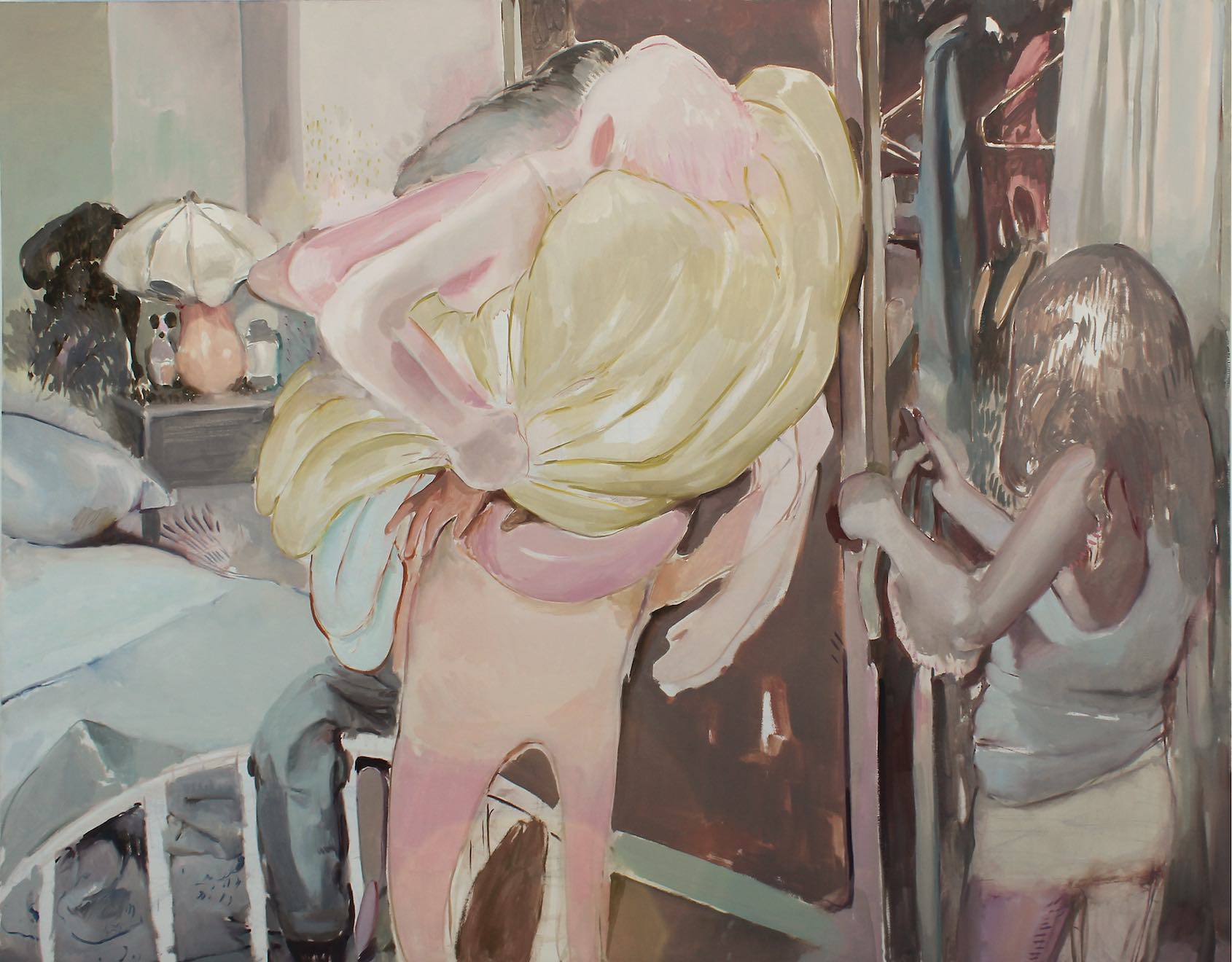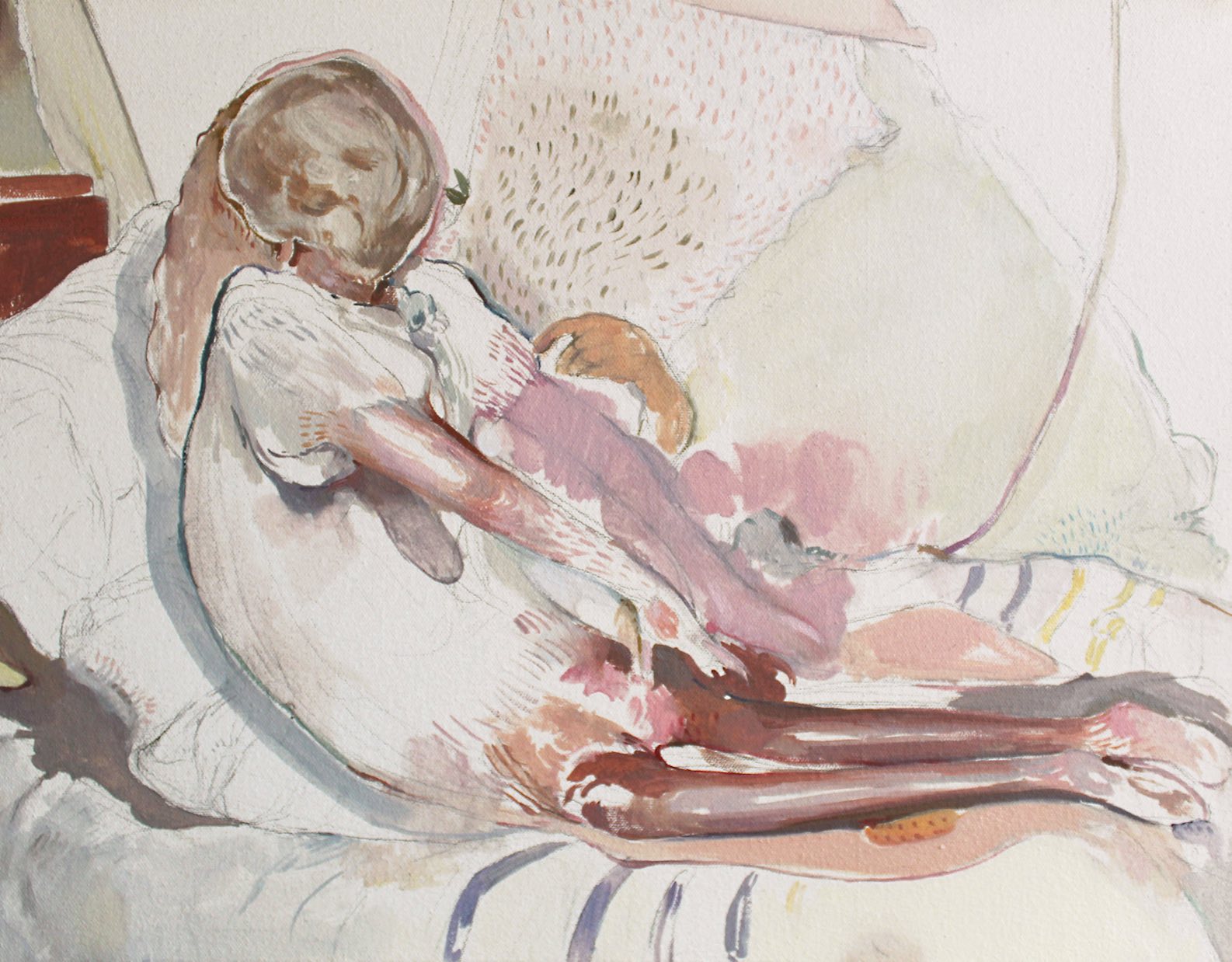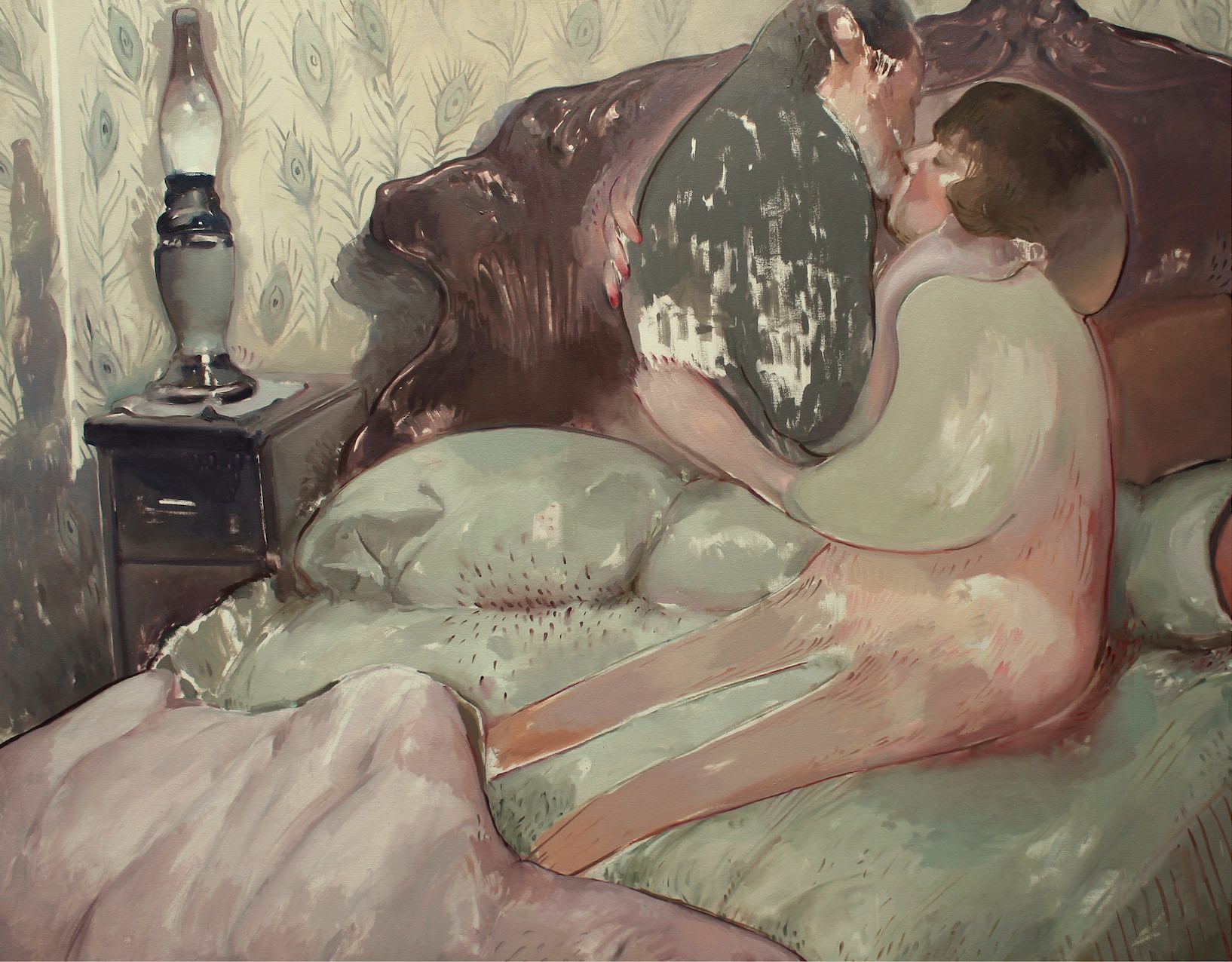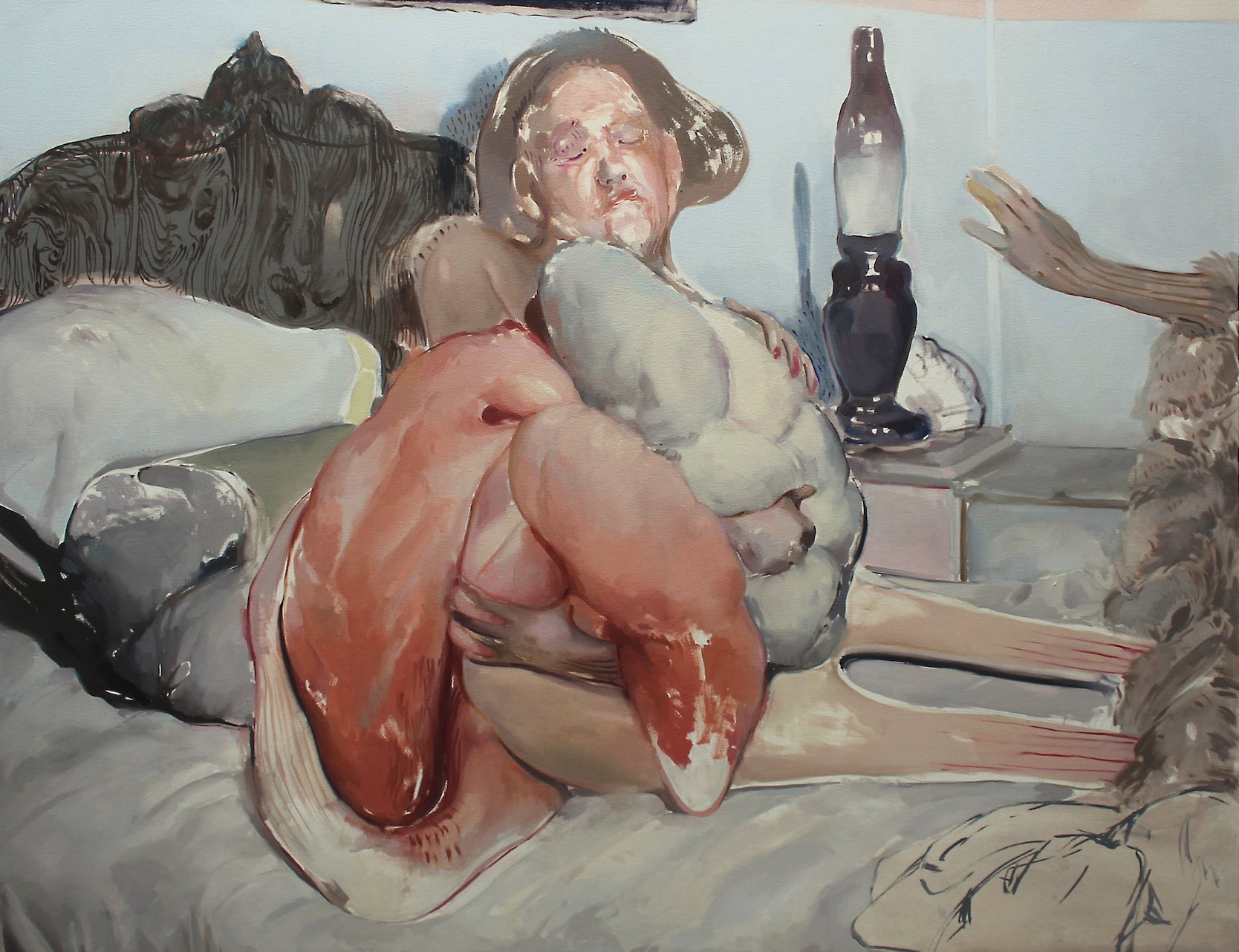
Interview
The Subjects are Pretexts: Interview with Gonzalo García
by Sofía Ortiz
Reading time
7 min
Ever since I sat down to talk with Gonzalo García, there’s a word that’s been reverberating in my head like a firework at the festival of San Judas Tadeo: “repertoire.” The repertoire—a term coined by Richard Wollheim, introduced to me via Gonzalo, and decomposed here once again for you—is each artist’s specific baggage: what arises from their biography, their heritage, their socio-political context, that is, the identity that deposits in a creative action, in a mark on the canvas. That’s the reason why a thirty-six-year-old artist returns to the paintings he made at twenty-three. Raising awareness of the repertoire blurs the boundary between life and work.
My apologies if I immediately zero in on what is most intense about Gonzalo’s artistic output. Perhaps it would be better to start in anecdotal, familiar territory: a studio located in Mexico City’s Historic Center, shared with other artists; hardwood floors and warm light; an orderly space, dedicated to work. Gonzalo matches with his pieces: he wears black with a pale pink cap. I notice that he’s been working with the same palette for several years; he tells me that, yes, that palette is something he understands more and more.

What first attracts me to Gonzalo’s paintings is the pleasure of seeing them: the application of the mark is deceptively light and at the same time explicitly sensual. The eyes leap from a line to a blot, from a blot to a space, with a special rhythm. Suddenly, the images manifest themselves—tense images, pregnant with narrative—and curb the ocular skipping: two figures, embracing and disappearing, fleshy flower garlands, hospital beds, decomposed limbs, a faded wallpaper. Wounds on the canvas. Deaths.
GG: Since 2018 I’ve been working on a series, Incendios [Fires], which is divided in two: bouquets and a narrative of women. The series was born from the book The Edge of the Storm by Agustín Yáñez. It’s a fictional story about pre-revolutionary Mexico, though Yáñez describes a real celebration: at Holy Week, the towns of central Mexico decorate the interiors of their homes with candles and flowers. Seen through a window, they look like fires. From this image I began generating my own fiction: the story of two women who collide and pollinate each other. One of them dies and from her death something else is born.

I met Gonzalo when we were babies together in the FONCA fellowship. Now talking in his studio, I try to be formal: when you were painting… explicit… pictures… What I mean is that I remember the dicks; monumental paintings of bodies that have been exposed, sexualized, and violated. But that was a long time ago. In recent years, Gonzalo’s methodology has consisted of in-depth research from historical archives: 1968, the massacre of El Halconazo, the ex-president Echeverría, among others. He’s interested in the possibility of painting in order to add up images that complete or complicate the historical archive. Nevertheless, it was for him a watershed to begin working from a story and not from research. It’s curious how the artist, even as the owner of his work, discovers that there are things in it that he had not allowed himself to do (or undo).
GG: I think of my painting not as a reference to some subject, but as a painting in itself. I borrow from other subjects and then make them the pretext for my own work. As my work [chamba] matures I realize that painting is more important than the pretexts for making it. The work dictates the search.
He takes out the book by Richard Wollheim, Painting as an Art. He says he’s going to lend it to me, but he hasn’t done so (yet). Wollheim argues that a work of art is not only to be understood in its materiality, but also according to the artist’s intentions: what they lived, but also what they thought and felt, what they inherited.
GG: For the painting to be honest it has to align with your repertoire. How much of it do you use? If I deposit the fact of being a man, of being white and privileged in my work, I complicate my painting. My pieces increasingly respond to my life. My grandmother made resin bouquets; I paint bouquets. I think about it all the time. Painting is getting closer and closer to my life and my life to painting; before it was a more distant relationship. Now my characters respond to my own experience in order to become more real.

GG: For my current FONCA project, I’m doing a review of films from the seventies and eighties, films that were shown on Channel 5 and that struck me as very bad-ass. I zeroed in on how we construct our perception of reality from pop culture: we understand affective relationships from the visual media we consume. The director I like best is Arturo Ripstein; I am very interested in how he reflects the narrative tension in domestic spaces. For example, in The Castle of Purity the mother lives locked in a pristine room with ostrich feather wallpaper, all in order to please the father. Human beings are not made to be locked up. Thus, he rethinks domestic spaces as hostile spaces.
On the other hand, there’s a moment of synchronicity. Touch, contagion, and confinement are subjects that have haunted the peripheries of his work, even before the pandemic. Nevertheless, I don’t think this is a coincidence, since talking to Gonzalo is to realize his deep sensitivity to the world around him. That empathy is reflected in the characters he paints: mostly women, some androgynous, in addition to his self-portraits. Gonzalo paints women not out of a response to feminism, but rather from his own repertoire. Raised by women, and as a queer man, he feels a complicity with female vulnerability, with the role of women as caregivers and as familial axes. Gonzalo also plays a caretaker role within his artistic community. His studio functions as a residence space that houses a young artist for a month in Mexico City. He is also the founder, together with Gerardo Muñoz, of La Guerrera, an independent artistic and curatorial project that disseminates emerging art.

I return to the pictures in front of me. I see them and they implore me to ask:
SO: Do you think that one day you will abandon figuration?
Gonzalo laughs.
SO: It’s that one can begin to see it, in certain places… What is your relationship like with the figure?
GG: In recent years, figuration has returned. After ten years of abstraction and twenty years of conceptual art, people feel it like it’s new. However, I believe that artists must understand the figure from another side, from their ability to respond to more complex processes, such as the repertoire. In painting, the trend is towards the impersonal: for example, a man painting women on canvas. Figurative painting is faced with an opportunity to refresh itself, to go beyond an aesthetic; it has to do so if it aims to survive being fashionable. When you’re an outsider you propose something, but nobody turns to see you; when you’re in the spotlight, the proposal has to be strong. I’ve been a figurative painter for thirteen years—not because of putting my paintings in a gallery, but because of a question of resistance and commitment. When the figurative trend is over, how am I going to defend my work? That has to interest all of us who paint.
And then Gonzalo does something that hadn’t happened to me before in interviews: he asks me questions. I continue thinking about them. What is my repertoire? Is it in the work? How am I going to defend it?
Published on November 7 2021